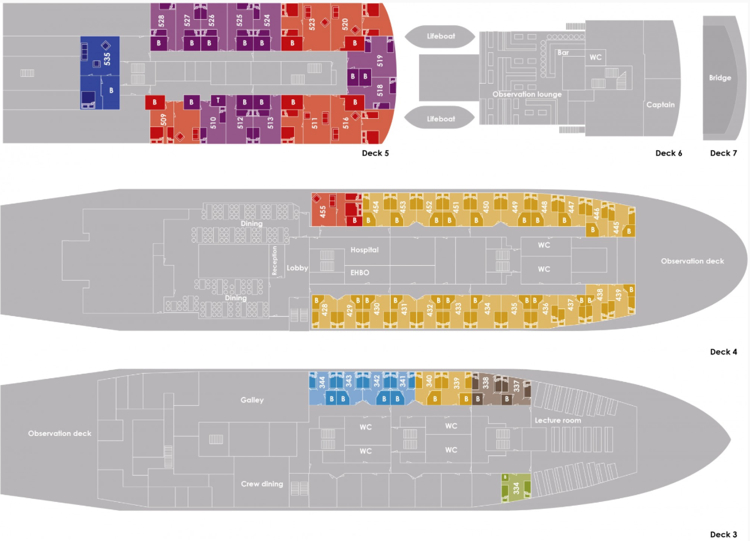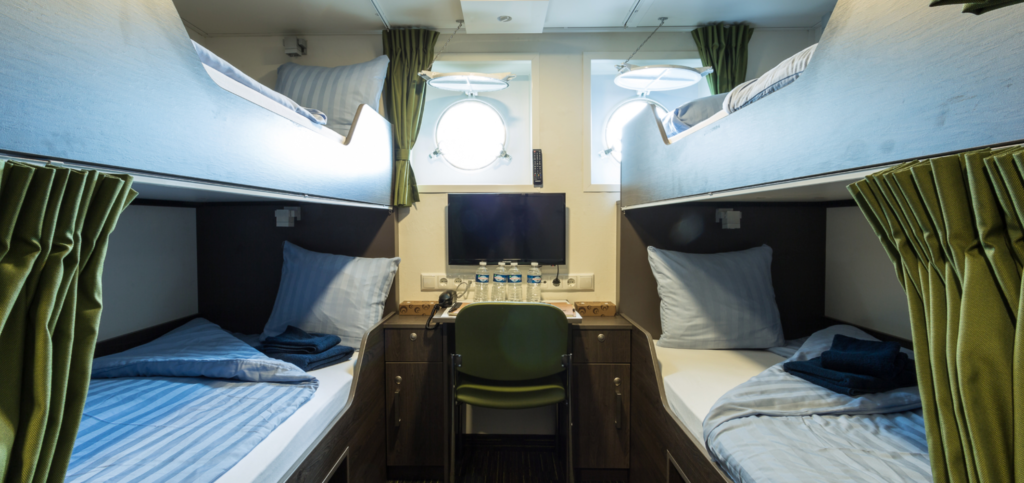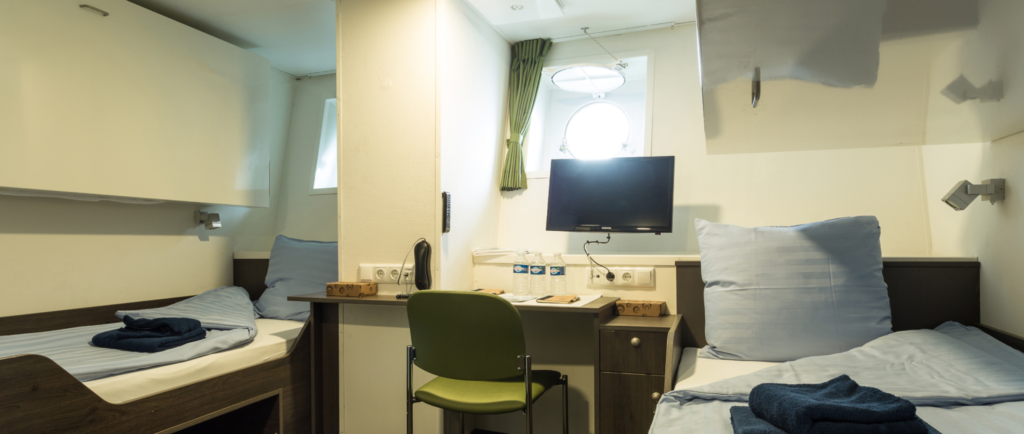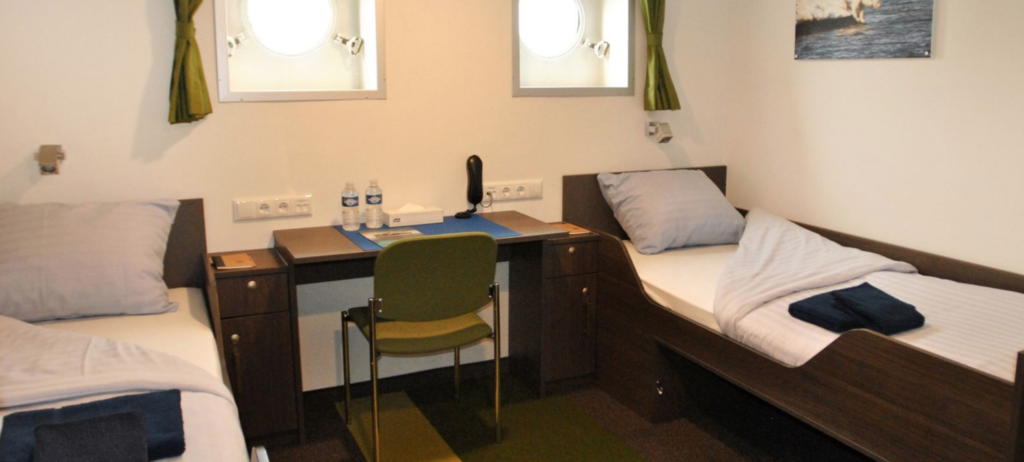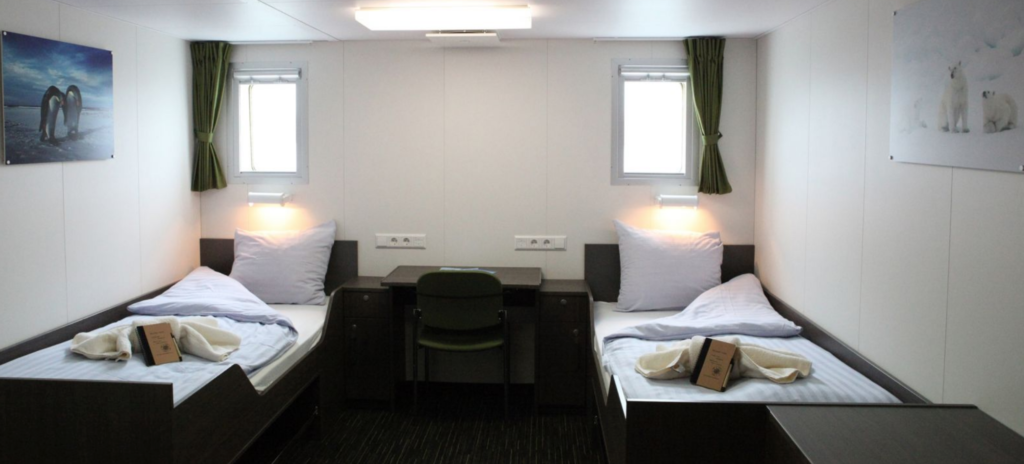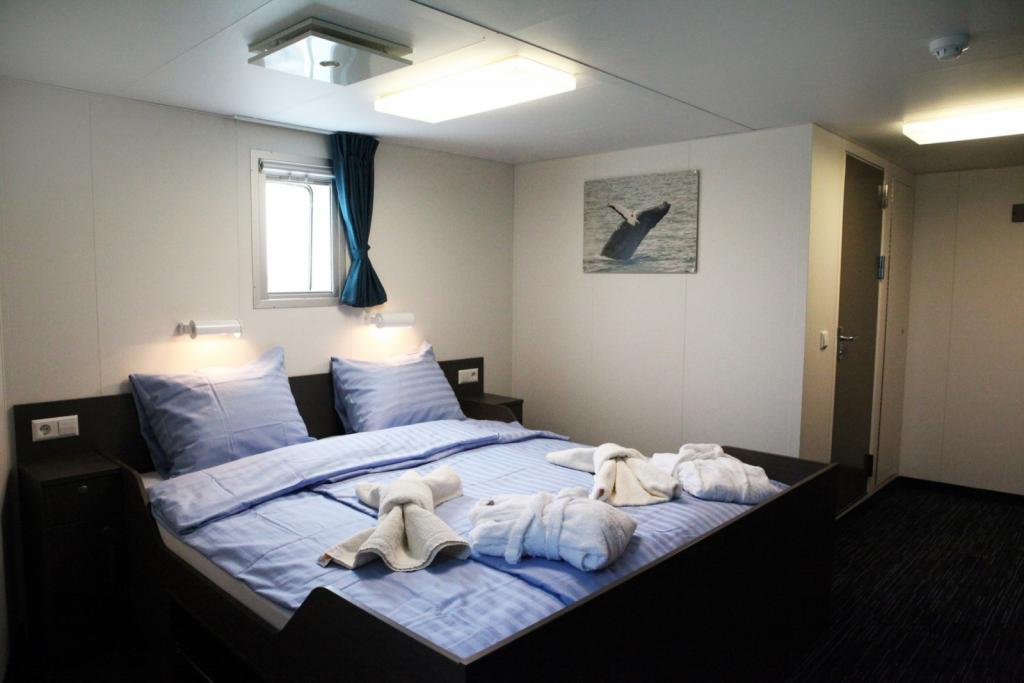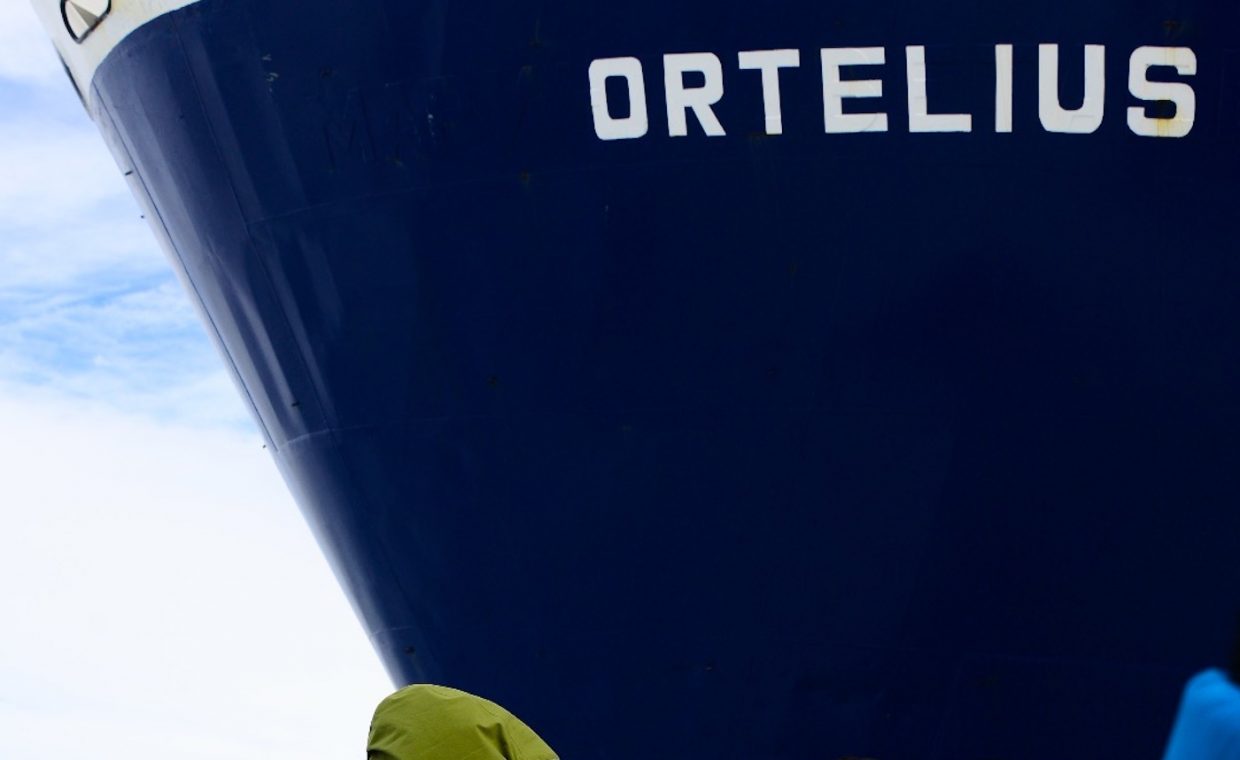Antarctica – Beyond the Polar Circle – Wilkins Ice Shelf – Aurora Australis – Ortelius, March 2025
Antarctica – Beyond the Polar Circle – Wilkins Ice Shelf – Aurora Australis – Ortelius, March 2025
Trip Summary
About the Antarctica Beyond the Polar Circle - Wilkins Ice Shelf - Aurora Australis Itinerary
Day 1: Ushuaia Days 2-3: Drake Passage Day 4: Pendleton Strait Days 5: Detaille Island & The Gullet Day 6: Porquoi Pas and Horseshoe Islands Days 7-10: George IV and Wilkins Ice Shelf Day 11: Jenny and Leonie Islands Day 12: Lagoon and Mikkelsen Islands Days 13-15: Drake Passage Day 16: Ushuaia
Itinerary Map
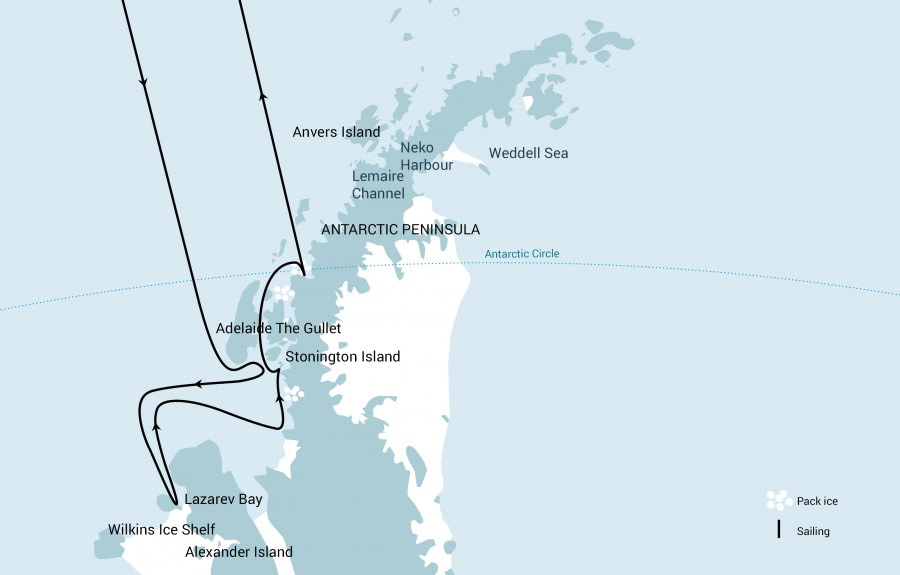
Pricing Information
About the Antarctica Beyond the Polar Circle - Wilkins Ice Shelf - Aurora Australis Itinerary
- Day 1: Ushuaia
- Days 2-3: Drake Passage
- Day 4: Pendleton Strait
- Days 5: Detaille Island & The Gullet
- Day 6: Porquoi Pas and Horseshoe Islands
- Days 7-10: George IV and Wilkins Ice Shelf
- Day 11: Jenny and Leonie Islands
- Day 12: Lagoon and Mikkelsen Islands
- Days 13-15: Drake Passage
- Day 16: Ushuaia
Detailed Itinerary
Day 1: Ushuaia
Your voyage begins where the world drops off. Ushuaia, Argentina, reputed to be the southernmost city on the planet, is located on the far southern tip of South America. Starting in the afternoon, you embark from this small resort town on Tierra del Fuego, nicknamed “The End of the World,” and sail the mountain-fringed Beagle Channel for the remainder of the evening.
Days 2-3: Drake Passage
Over the next two days on the Drake Passage, you enjoy some of the same experiences encountered by the great polar explorers who first charted these regions: cool salt breezes, rolling seas, maybe even a fin whale spouting up sea spray. After passing the Antarctic Convergence – Antarctica’s natural boundary, formed when north-flowing cold waters collide with warmer sub-Antarctic seas – you are in the circum-Antarctic upwelling zone.
Not only does the marine life change, the avian life changes too. Wandering albatrosses, grey-headed albatrosses, black-browed albatrosses, light-mantled sooty albatrosses, cape pigeons, southern fulmars, Wilson’s storm petrels, blue petrels, and Antarctic petrels are a few of the birds you might see.
Day 4: Pendleton Strait
You arrive at the Antarctic Peninsula near the Antarctic Circle in the afternoon. If sea ice allows it, you can then continue through Pendleton Strait and attempt a landing at the rarely visited southern tip of Renaud Island. Here you have the opportunity to see the first Adélie penguins of the trip as well as enjoy spectacular views of the icebergs in this surreal, snow-swept environment.
In the afternoon we sail to the Fish Islands and encounter one of the southernmost Adélie penguin and blue-eyed shag colonies in the Antarctic Peninsula.
Spending the night in the area of Crystal Sound the scenery will leave you staying up until the small hours, there is a chance to see Orca, Humpback and Minke Whale in this area.
Day 5: Detaille Island and The Gullet
Detaille Island – You may make a landing at an abandoned British research station here, taking in the island’s lofty position and imposing glaciers scenery.
We then sail through The Gullet, one of the most impressive narrow channels in Antarctic, with towering mountains either side, birds following the ship and playful penguins and seals frolicking in the water as we sail through this very special part of the journey. If ice conditions allow we will also carry out a landing or cruise in the afternoon.
Day 6: Porquoi Pas and Horseshoe Islands
Discovered and charted by the famous explorer Charcot, Pourquoi Pas offers a pleasant landing on a rocky beach against the backdrop of the mighty Moider Glacier. A gentle walk from the landing site provides an impressive view, while Antarctic furs seals relaxing behind the beach are a nice addition to the wildlife we’ve encountered on this voyage.
After lunch we head toward Horseshoe Island, named for its distinctive shape. An abandoned research station provides an insight into the early days of scientific research, and original artifacts show how different life was in those pioneering days. The hut is set among some of the most beautiful scenery in Antarctica, with views over the mountains and snow of Pourquoi Pas Island as well as Horseshoe Island’s mountain range. This is a photographic landing in many senses. Two old wooden boats even remain at the landing site as if waiting for their final launch.
Day 7 - 10: George IV and Wilkins Ice Shelf
Provided ice and weather conditions allow, you next head toward Antarctica’s ice shelves (the George IV and Wilkins). Here we hope to show you the scale of these vast cliffs and expanses of ice that will dwarf us and our ship. A range of Antarctic wildlife like humpback whales, fur seals, Adélie penguins, and maybe even one or more Ross’ seals may appear.
Day 11: Jenny and Leonie Islands
Jenny Island will give another aspect to your Antarctic experience, offering raised beaches, hanging glaciers, and moss carpets. The island is also popular with wildlife: Terns, skuas, elephant seals, leopard seals, and Adélie penguins are all regular visitors.
A landing at Leonie Island will take your breath away. There is also the possibility to take a hike to the peak of the island, giving you a dramatic panorama of Marguerite Bay and Adelaide Island.
Day 12: Lagoon and Mikkelsen Islands
Lagoon island is the most northern island of the Leonie Islands group, also discovered and charted by Jean-Baptiste Charcot. This low laying island will provide a stark contrast to the previous days with its gently sloped beaches and flat areas to explore. The wildlife here will varies depending on snow cover. If there is little snow the ground is almost desert-like in appearance.
The Mikkelsen Islands offer a spectacular Zodiac cruise where we hope to encounter up to five Antarctic seal species. We may also see some beautiful birdlife, such as giant petrels and Adélie penguins.
Days 13-15: Drake Passage
Your return voyage is far from lonely. While crossing the Drake, you’re again greeted by the vast array of seabirds remembered from the passage south. But they seem a little more familiar to you now, and you to them.
Day 16: Ushuaia
Every adventure, no matter how grand, must eventually come to an end. It’s now time to disembark in Ushuaia, but with memories that will accompany you wherever your next adventure lies.
Welcome Aboard the Ortelius

The ice-strengthened vessel Ortelius is an excellent vessel for Polar expedition cruises in the Arctic and Antarctica, capable of visiting remote locations such as the Ross Sea and Franz Josef Land in the Arctic. Ortelius was built in Poland in 1989 and worked as a special purpose vessel for the Russian Academy of Science.
The vessel has the highest ice-class notation (UL1 equivalent to 1A) and is therefore very suitable to navigate in solid one-year sea ice and loose multi-year pack ice. Ortelius is a great expedition vessel for 100 passengers with lots of open-deck spaces and a very large bridge which is accessible to the passengers. Ortelius offers a comfortable hotel standard, with two restaurants, a bar, lecture room and a sauna.
Though our voyages are primarily meant to offer our passengers an exploratory wildlife program with as much time ashore as possible, Ortelius offers all the comforts of a standard hotel ― along with a bar and lecture room. Flexibility assures maximum wildlife opportunities. As such, Ortelius carries 10 Zodiacs with 60hp Yamaha engines.
Technical Specs
- Passengers: 116
- Staff & Crew: 47
- Length: 91.25 meters
- Breadth: 17.61 meters
- Draft: 5.8 meters
- Ice class: UL1 (equivalent to 1A)
- Displacement: 4575 tonnes
- Engines: 6 ZL 40/48 SULZER
- Speed: 12 knots (14.3 knots max)
Ortelius can accommodate up to 116-123 passengers and has an abundance of open-deck spaces. It is manned by 22 highly experienced nautical crew members, 19 hotel staff, eight expedition specialists (one expedition leader, one assistant, and six lecturer-guides), and one doctor.
Cabins & Amenities
- Two restaurants with open seating
- Bar / observation lounge
- Elevator
- Internet access
- Private facilities – sink, toilet shower, hairdryer and bathrobes in every cabin
- Multi-purpose presentation room with state-of-the-art equipment
- Stabilizers for smooth sailing
- 10 zodiacs onboard
Notes
- Rates are per person, based on twin share. Single Supplement for twin cabins is 1.7 times the twin rate.
- Mandatory Emergency Evacuation insurance is required on all trips.
- Camping – From USD$190 per night, max 30 people
- Kayaking – From USD$465 per trip, max 14 people
- Snowshoe – no charge but sign up required
- Adventure Activities for the “Base Camp” voyages are free of charge
- There is always a possibility of an added fuel surcharge if marine oil prices raise significantly.
SHIP CAPACITY UPDATE: Starting with 2020 Arctic & 2020-2021 Antarctica Season, the ship capacity will be reduced to 108 passengers & no triple cabins will be available. We can accommodate three passengers traveling together in a Superior Cabin + a sofa bed.
